I’ve been hearing a few rumors of a Google Update happening between the 15th and 18th December that coincide with a mild increase in volatility of the SERP trackers over the same period.
At the moment, it is difficult to find any patterns or any specific website category this is targeting, so I’ll treat it, for now, as just a broad generic algorithm change. Once I have more data (over the next week), I’ll come back and update this post with further insights.
SERP Tracker Volatility
Rank Risk Index:
After a relatively quiet period since the 30th November update, the Rank Risk Index tracker shows a period of increased volatility between the 15th and 18th December 2018. The volatility appears to have peaked on the 16th and 17th December.
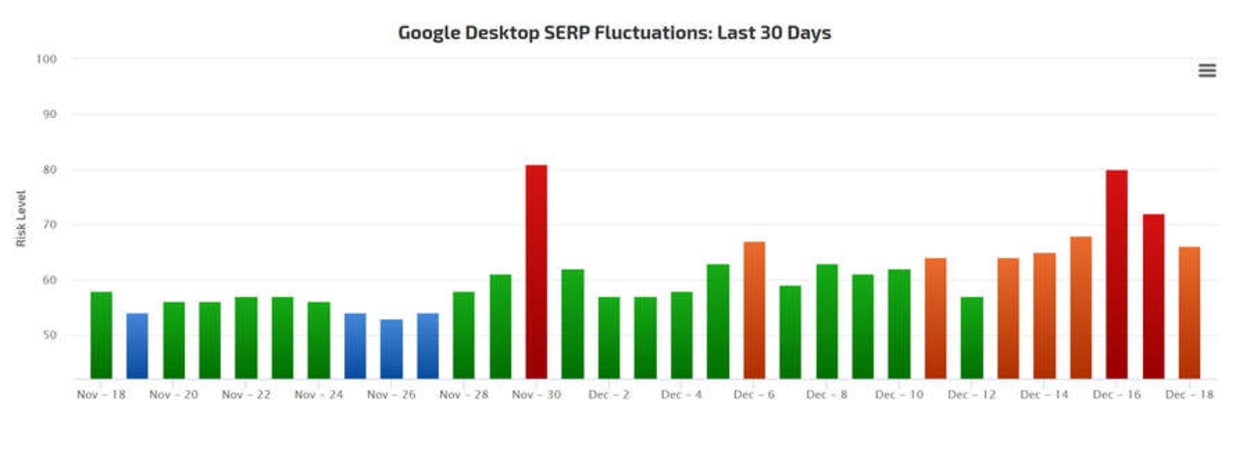
SERPmetrics:
The SERPmetrics flux index interestingly shows a more substantial spike on the 15th and 16th December than the significant update on the 20th November when looking at the top 100 results, but is more in-line with the Rank Risk Index when looking at the top 10 results.
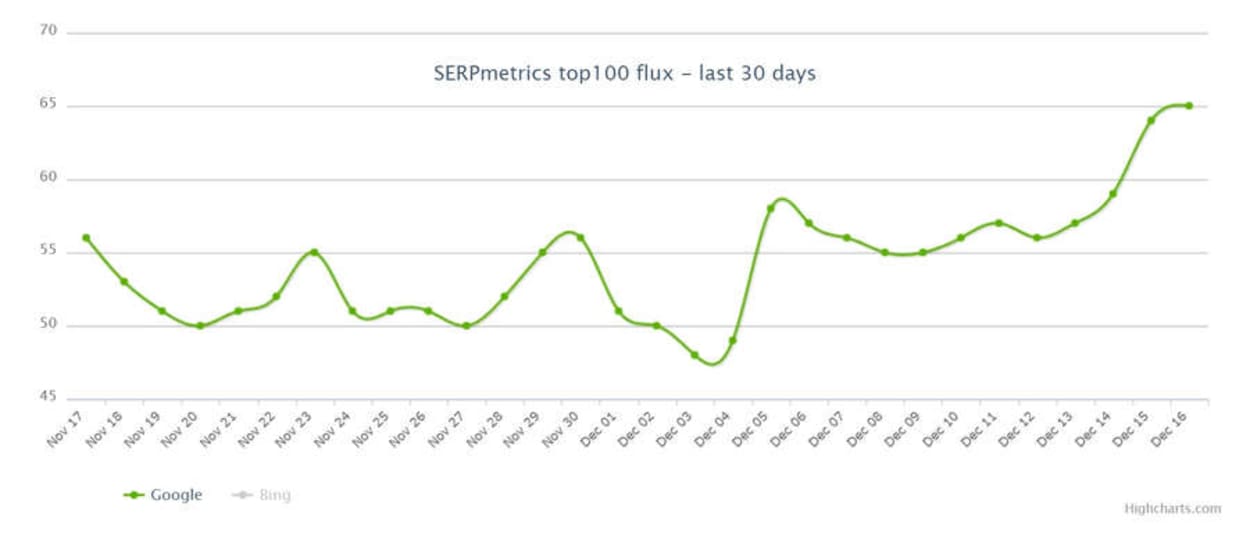
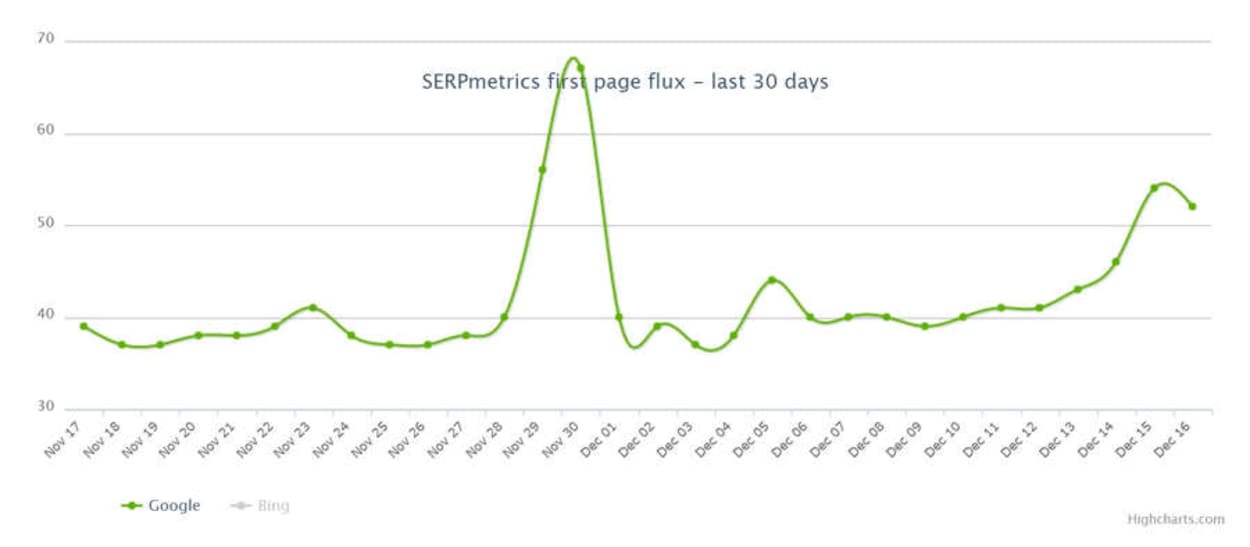
MozCast:
The MozCast weather report is a little behind on it’s reporting. They report the spike in volatility a little earlier than the other SERP trackers, with it taking place on the 14th and 15th December.
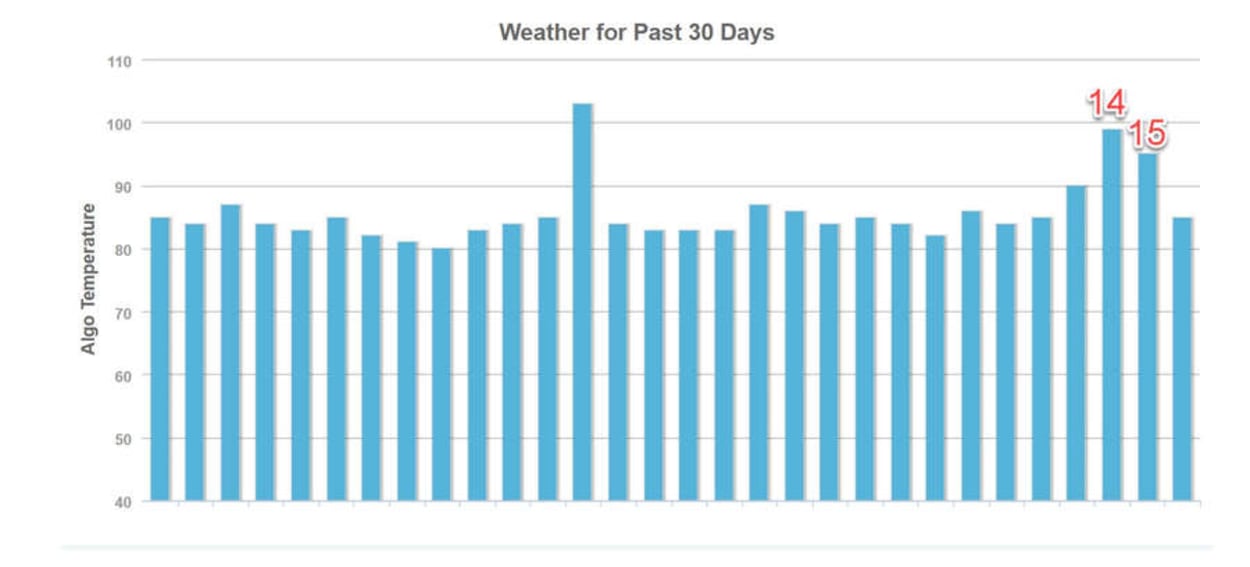
Google Grump:
The data from Google Grump is quite interesting as it is one of the few to show a global perspective.
The first chart below shows increased global volatility for the last week or so. The second chart showing the US volatility, only shows the volatility in line with what I have displayed above. While not shown below, I checked the volatility for the UK, Australia, Denmark, Germany, and France. All showed significantly more volatility than the US.


SEMrush:
The SEMrush Sensor shows a spike in volatility between the 15th and 17th December.
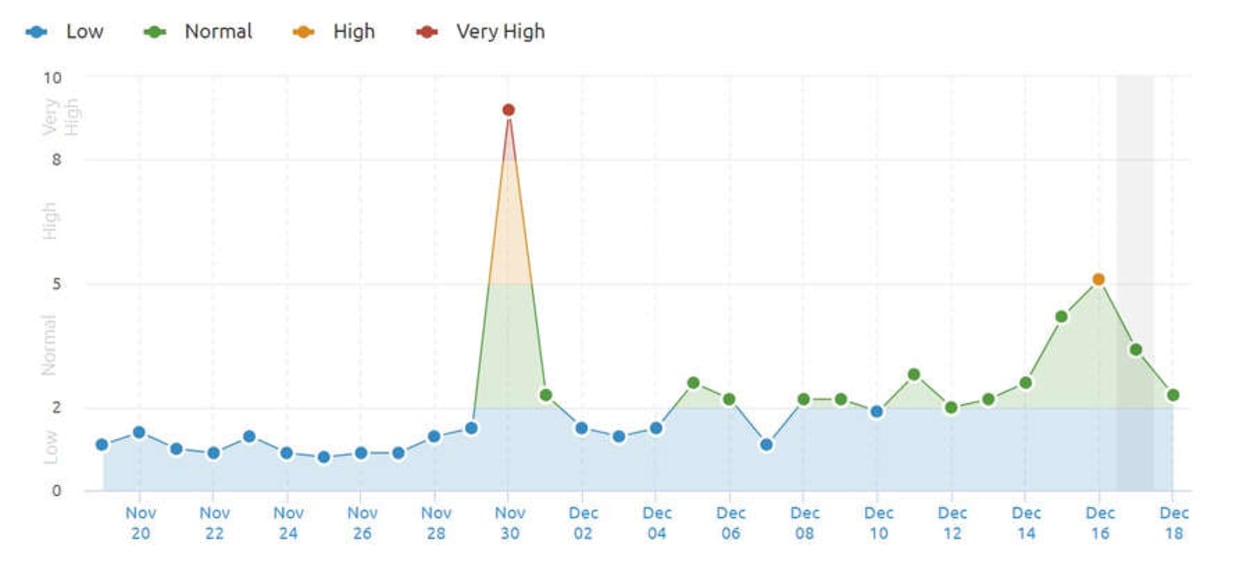
I also checked to see what categories appear to be most affected, but the results differed significantly over each day. I wonder if the rollout of the Google Update was staggered over different days, with different parts of the algorithm change affecting different types of sites.
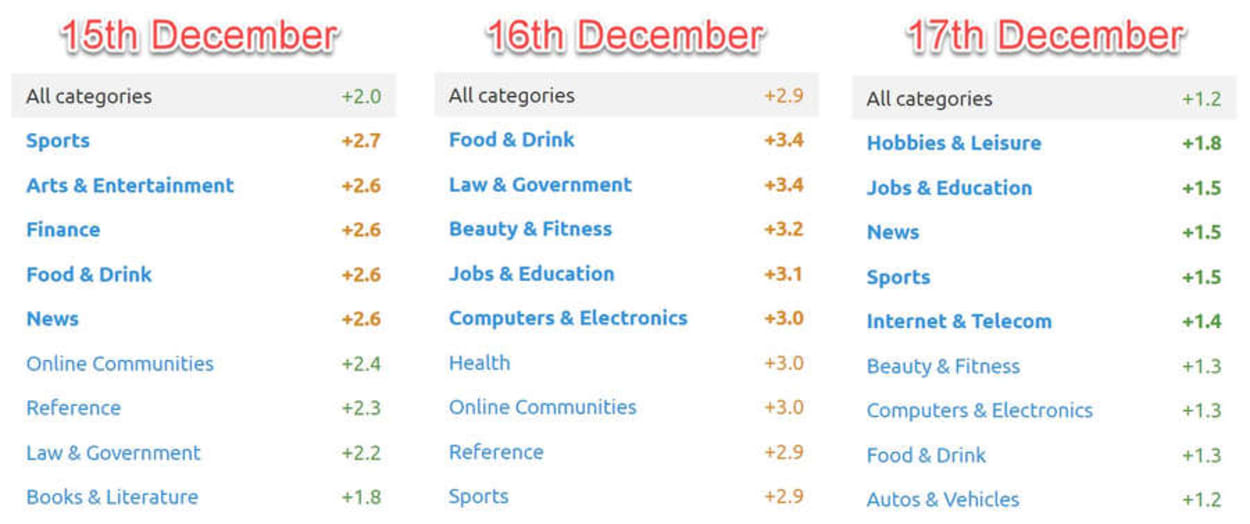
The above chart shows the deviations from the norm for each category, rather than the level of volatility. This is a better way to view it as categories such as News naturally have a much higher level of volatility than anything else.
Some of the movements we are seeing may be seasonal. For example, there may be a higher number of Food and Drink recipes being posted due to the Christmas period. Equally, high volatility in Beauty & Fitness, along with Computers & Electronics, could be due to more blog posts advertising Christmas gifts.
I’ll come back to the possibility that this is just seasonal variations later.
Chatter in the SEO community indicates there was a Google Update
WebMasterWorld Forum:
You can read the relevant forum thread here. Many users are reporting that an update took place:
Recently every site took a major hit. This in the middle of what was traditionally the holiday “rush”. Nice sneaky greed move G…again.
Seems that an update brewing. The ranking is very fluctuating.
Hellp me, google update 15.12.18 my website reduce traffic 35% all webpage in website
Black Hat World Forum:
You can read the relevant forum thread here. Again, users are reporting significant losses in traffic.
Without a doubt another major update rolling out. All websites shifted 10-30,000 organic searches a day. About 20-30% of website traffic a day.
Traffic dropped
The number of people complaining in the forums is relatively low compared to the 30th November Update. I suspect this is a relatively minor update.
Is this just Seasonal Volatility?
I suspect there is some seasonal volatility occurring throughout December each year, but not to the extent the charts below show. My gut feeling is that Google is just rolling out updates before they take their Christmas break.
The charts below are for the US only.
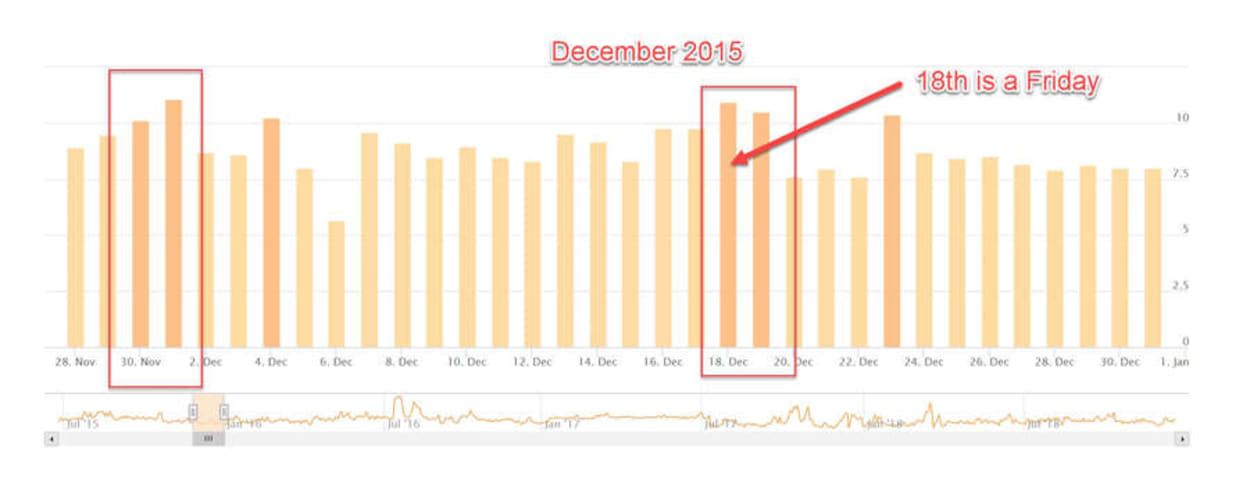



Case Studies
There are a couple of case studies by SEO consultants showing good recoveries after focussing on content quality and trust.
Both examples are from sites previously hit by the Medic Update in August 2018.
Recovery from E-A-T

Dr. Marie Haynes reported that one of her clients saw significant recovery for a client that focussed on improving the following:
- Improving how E-A-T is displayed (i.e., detailed author bio)
- Trimming out or improving upon thin content
- Improving several aspects of trust
Recovery from the Medic Update
The Medic update was an algorithm update that targeted E-A-T on 1st August 2019. Many websites, primarily in the health sector, saw considerable losses in traffic because they failed to show they were trustworthy.
There is an interesting case study posted on Search Engine Land that saw the recovery of a website that was hit particularly bad by the Medic update.
As you can see the charts below, the Estimated traffic dropped by a massive 72%:
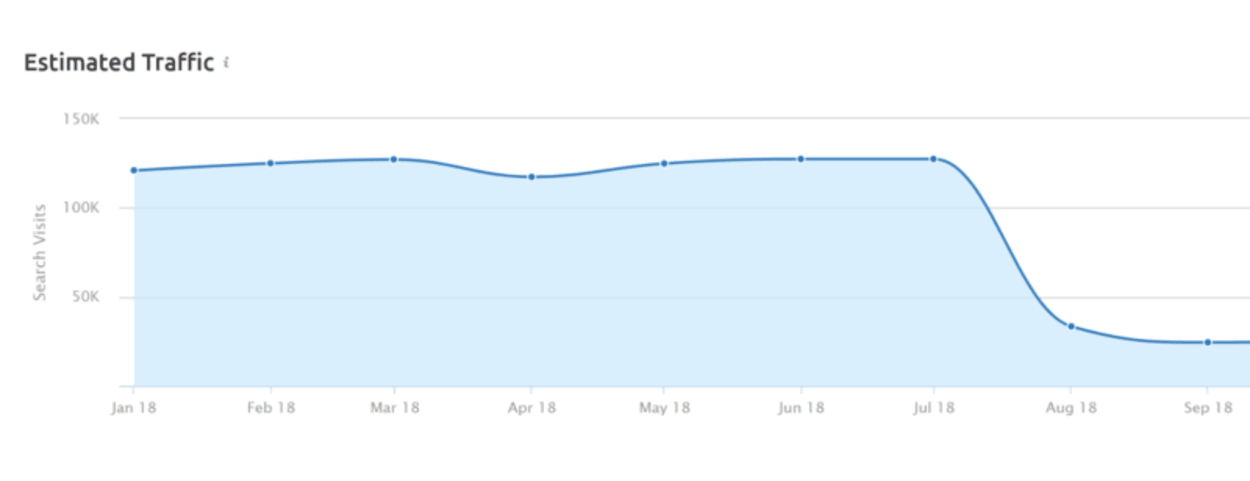
Their website was aimed at connecting people with doctors. It contains a detailed glossary of medical terms, articles by doctors, and reviews of local doctors.
I highly recommend reading the full article as it contains some useful insights on approaching a penalty hit site.
Here are some of the most interesting takeaways:
- They removed or nofollowed all links from their blog (presumably a separate domain) to their website and vice versa. This included different footer \ footer links.
- They improved the overall site quality score by doing the “old-style boost, nuke or noindex process.” They removed, rewrote, or noindexed low-quality content.
- They classified each page according to the intended purpose. They used Know intent (Informational search queries) for pure content about a specific medical treatment, and Do intent (Navigational search queries) for listing pages about a medical condition.
- Removed the number of promotional CTA’s from five to just two or one.
- They improved E-A-T by enhancing author bio information, had physicians review content, and added reviewer schema, along with their website.
- They added forms that asked for doctors’ and patients’ feedback.
They had some technical issues with review schema and automatic translation (John Mueller has previously stated that auto-translation is a form of spam).
What to do if your rankings have dropped
Invariably, if your rankings drop coincides with an increase in volatility in general, then it is likely to be a content quality issue.
There have been several other Google Updates this year that have focussed on content relevant (i.e., does your content satisfy user intent for that query), and E-A-T (i.e., is your content trustworthy).
The E-A-T update, meaning Expertise, Authority, and Trust, sought to introduce algorithms that identified the highest quality of pages. Much of the detail on what the update was looking for was introduced in the Quality Raters Guidelines. You can find the document here with the relevant section starting on page 24.
For a high-quality page, Google wants to see the following:
- Very high level of Expertise, Authoritativeness, and Trustworthiness (E-A-T)
- A very satisfying amount of high or highest quality Main Content.
- Very positive website reputation for a website that is responsible for the Main Content on the page. Very positive reputation of the creator of the Main Content, if different from that of the website.
Once you have read the guidelines, I recommend taking a step back and thinking about the type and quality of content you are producing. You can then adapt your strategy accordingly.
I also recommend doing a technical audit.
Just remember, changes will not happen overnight and may require more than just carrying out a site audit. The example case study provides some insight into this.
It takes hard work, and any changes you make today may not reflect in your rankings for several months. But don’t let that get you down. Keep working at it, and you will be rewarded.
